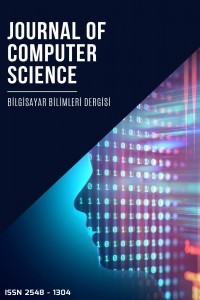Best Member Detection and Using as Differential Evolution Crossover Operator in Decomposition-based Multiobjective Optimization Algorithm
MOEA/D, decomposition, multiobjective optimization, crossover.
Best Member Detection and Using as Differential Evolution Crossover Operator in Decomposition-based Multiobjective Optimization Algorithm
MOEA/D, decomposition, multiobjective optimization, crossover.,
___
- Altinoz, T. (2022) Comparing Simulated Crossover and Differential Evolution Crossover operator in MOEA/D Algorithm. 1st International Conference on Engineering and Applied Natural Sciences, pp. 1-6.
- Altinoz, T. (2022b) Decomposition Variants of the Multi-objective Evolutionary Algorithm Based on Decomposition Algorithm for Solving Many-objective Optimization Problems. 2nd. International Symposium of Scientific Research and Innovative Studies, pp. 1-10.
- Cheng, R. Li, M., Tian, Y. Zhang, X. Yang, S. Jin, Y. and Yao, X. (2017) A Benchmark Test Suit for Evolutionary Many-objective Optimization. Complex Intell. Syst. vol. 3, pp. 67–81.
- Deb, K. and Agrawal, R.B. (1995) Simulated binary crossover for continuous search space. Complex systems, vol. 9, no. 2, pp. 115-148.
- Ehrgott, e. (2000) Approximation algorithms for combinatorial multicriteria optimization problems. International Transactions in Operational Research, vol. 7, no. 531.
- Ishibuchi, H. Masuda, H. Tanigaki, Y. and Nojima, Y. (2015) Modified distance calculation in generational distance and inverted generational distance. International Conference on Evolutionary Multi-Criterion Optimization. Springer, pp. 110–125.
- Li, H. and Zhang, Q. (2009) Multiobjective optimization problems with complicated Pareto sets, MOEA/D and NSGA-II. IEEE Transactions on Evolutionary Computation, vol. 13, no. 2, pp. 284-302.
- Zhang Q. Li H. “MOEA/D: A Multiobjective Evolutionary Algorithm Based on Decomposition,” IEEE Transactions on Evolutionary Computation, vol. 11, no. 6, 2007.
- ISSN: 2548-1304
- Yayın Aralığı: Yılda 2 Sayı
- Başlangıç: 2016
- Yayıncı: Ali KARCI
Olayla İlgili Potansiyel Sinyalleri Kullanarak Şizofreninin Analizi ve Sınıflandırılması
Anıl AKSÖZ, Doğukan AKYÜZ, Furkan BAYIR, Nevzat Can YILDIZ, Fırat ORHANBULUCU, Fatma LATİFOĞLU
Akademik Yazılarda Resim İntihal Kontrolü Sistemi
Muhammed Saadetdin KAYA, Kenan İNCE
Akciğer Kanser Tipi Tespitinde Etkili Bir Görüntü Çoğullama Tekniği
Berna ARI, Ömer Faruk ALÇİN, Abdülkadir ŞENGÜR
IPS Sistemlerde Yapay Zekânın Son Beş Yıldaki Gelişimi
Akıllı Şebekelerde Dinamik Enerji Fiyatlandırılması Üzerine Bir Çalışma
Transfer Learning-Based Classification Comparison of Stroke
Rusul Ali Jabbar ALHATEMİ, Serkan SAVAŞ
Pupil Center Localization Based on Mini U-Net
Evrişimsel Sinir Ağları ile Konuşmadan Duygu Tanıma Sistemi
Metehan AYDİN, Bülent TUĞRUL, Yilmaz AR
Beyin Tümörü Bölütleme ve Algılamada Yeni Çekişmeli Üretken Ağ Kullanılması
